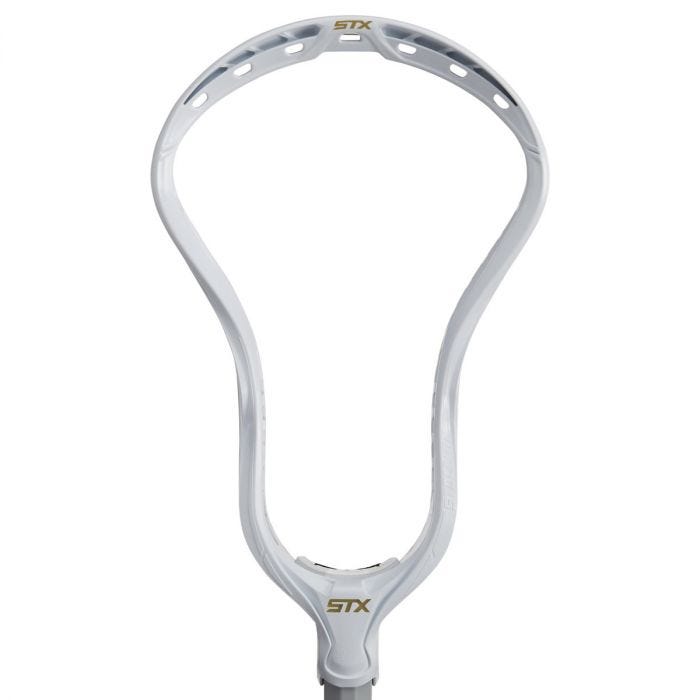Hey, you came back for Project Pinnacle, the series where we all try to build the best lacrosse head for us - thank you! I know this is a very niche series, but not writing about gear for almost a year has really gotten to me, so forgive my indulgences as we enter the new year. New Year, same me. Me, same. There was that wild pro lacrosse news that pushed its way to the front of the queue, but now it’s time to get back on track with this project for 2021.
For a refresher, here are the two previous entries to you can get caught up:
Intro: https://lacrocity.substack.com/p/project-pinnacle
Offset Point: https://lacrocity.substack.com/p/project-pinnacle-offset-points
Today we are getting into the second-most important aspect of ahead design (to me) and that is face shape. Lacrosse heads have gone through a major renaissance period in the last 15 years from being ultra pinched to wider and more keyhole-shaped. Now a huge part of that was the 2010 rule change that mandated much wider heads.
Sidebar: Thanks NCAA rules committee, I’m sure the decision in no way benefitted the lacrosse manufacturers who made two versions of the same head and split their focus between a new and a dying market. It totally didn’t disrupt and bifurcate all aspects of design for a decade-plus. Seriously. Love the vision.
To whit, the face shape of a lacrosse head has come to be more of a defining characteristic than the sidewall design. Which, generations ago, was the differentiator of brands just like the location of the screw hole and how it only fit on compatible shafts. Then people realized that mechanized drills are a thing, but I digress.
My personal thoughts on face shape, unlike offset points, have changed in the last five years or so. I used to be in the camp of wanting my heads to be as short and pinched as possible. I still stan for the shortness (this is the song of my people), but I’ve moved towards appreciating the wider head. It does make catching easier and age makes catching harder so there is a balance to strike there. The ravages of time are not always supported by design shifts in any market or sport, much less lacrosse. But in this case, those mutual interests do align perfectly. However, that’s due in large part to advances in stringing and sidewall hole design as well.
We all (not the colloquial “all”, but “all stringers”) know that you need to pull down the first three to five diamonds in order to make a channel. A wider head means that the tension on those diamonds is easier to dial in even though the back rail of a lacrosse head isn’t always a 1 to 1 translation to the front. Where you decide to pull down your first allotment of mesh diamonds will determine the tension and that tension is what creates a release point and the rest of the diamonds help determine the depth and shape of your pocket.
So, when it comes to picking a perfect face shape, your pocket location factors deeply into that decision. Ideally, the final locked down diamond will line up with the taper of the face shape, just on the other side of the rail. For me, and the pockets that I use presently, that point is a little higher than halfway up the head. It makes my channel a little more manageable and allows the ball to ride high for what I used to call a crank shot but is now more like a placement shot. As far as handling and whip go, that malleable depth and channel are also ideal. Basically, if I can throw a crappy jump fake into an even worse toe drag that’s all I need. Use whatever whip/hook scale you find appropriate. People either love or hate throwing with my sticks depending on their mechanics for shooting and/or lever passing.
So, which modern head has the kind of face shape that facilitates these needs? For me, it is between the STX Stallion Omega and the ECD DNA. It’s important to note that we’re just talking about face shape here, so weight, offset and scoop are all irrelevant. This is one dimension of the design. The DNA ekes out the win here because the taper point is slightly more gradual and less sharp. You want sharp tension points, go get yourself a Kinetik or Kinetik 2 and try to get that last lock knot right. Go ahead, I’ll wait here forever.
If you’re more into a keyhole shape there are a litany of heads to consider for your choice since that’s a certain design aesthetic that most companies have at least one product that aligns with. To categorize by brands, ECD Mirage 2, Epoch Z1, Maverik Kinetik 2 and Optik 2, Nike CEO and Vapor Elite, TRUE Vektr aaaand almost every faceoff head (but that’s more related to rail flex and scoop need in order to fall in line with regulations.)
The real translation here is that I’m very basic in my face shape preferences despite being spoiled for choice with varying degrees of taper and pinch. A lot of you will prefer a higher flare (flair? You wish) because that’s what has become the newer standard for offensive heads. And that’s great. But the old school is the best school and minimalism is the wave. What’s your ideal face shape?
There is a companion podcast to this piece that will go up next week, so make sure to subscribe to the LacroCity podcast provider of your choice and get ready for the fourth installment of this series later this month. Thanks for reading - stay safe and wear a mask.





